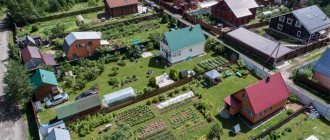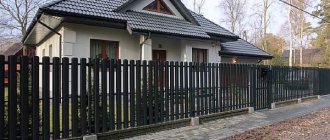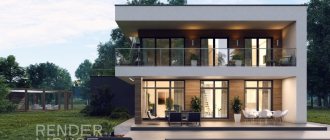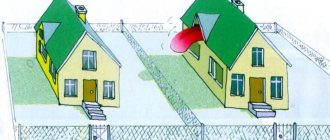SNT or a gardening non-profit partnership has rules and regulations for the development of a site and the location of objects for various purposes. SP 53.13330.2011 replaced the outdated SNiP 30-02-97 - all the main requirements and links to other regulations can be found in this document.
The standards for buildings on a summer cottage in SNT are aimed at ensuring fire and sanitary safety, as well as optimal conditions for growing crops.
Land development in SNT
Do greenhouses need to be registered?
Let's start with perhaps the most pressing issue in the last three months.
As soon as the owners of gardens and vegetable gardens learned about the mandatory registration (and, accordingly, taxes) of outbuildings on a foundation, questions began to pour in about what to do with greenhouses and sheds, toilets, etc. The resonance was so high that at the end of April the deputy chairman of the State Duma Irina Yarovaya asked the head of the Federal Tax Service Mikhail Mishustin to check the information and once again clarify “to pay or not to pay.” Specialists from BTI and Rosreestr responded as follows:
The need to register outbuildings, including greenhouses and sheds, depends on the purpose of the site.
“If the land is intended for vegetable gardening, then the construction of capital construction projects is not allowed on such plots. This means that all outbuildings (sheds, bathhouses, greenhouses, sheds, cellars, wells and other structures) cannot be erected as capital ones - on a solid foundation.
But garden plots can accommodate capital outbuildings that are firmly connected to the ground, that is, objects that cannot be moved without compromising their purpose. Rights to such objects are subject to registration.”
Conclusion: if greenhouses on a permanent foundation appear on garden plots, they will have to be demolished; if on garden plots, they will have to be registered.
Please note that the Russian Ministry of Economic Development is currently developing a bill that clarifies the criteria for classifying objects as immovable or movable things. According to the draft law, auxiliary buildings - sheds, greenhouses, etc. - will be considered improvements to the land plot or the main facility, for example, a residential building. Previously registered buildings can be excluded from the Unified State Register of Real Estate in a simplified manner at the request of the copyright holder.
Fire safety standards
If the building is more than two floors in height, then a number of fire regulations must be observed in order to put it into operation. For example, it is necessary to provide fire-resistant partitions, equip escape routes and install fire alarms.
Of course, such buildings in dachas are extremely rare, so there is no point in talking about this.
Distances between buildings on the SNT site
All residential buildings are subject to the requirement for indentations, according to the material of the walls and ceilings, as has already been mentioned:
- Buildings made of brick and stone can be 6 meters apart.
- If one of them has wooden floors, the clearance increases to 8 meters.
- Both are partially combustible - 10 meters.
- For wooden structures the distance is 15 meters.
Indentation options are shown in the table above. The distance is calculated from the surfaces of the walls and base. If the building has protruding parts, then the setback is calculated from them or their projection onto the ground.
If there is no central gas supply, a liquefied gas cylinder with a volume of up to 12 liters can be used inside a residential building.
Why do they want to extend the dacha amnesty again? How many unregistered dachas are there today?
The dacha amnesty, in fact, ended ahead of schedule on March 1, 2021, when the transition period for the new rules that introduced amendments to the Town Planning Code of August 4, 2021 ended. True, a bill has already been introduced to the State Duma to extend the dacha amnesty until March 1, 2022.
“Neither Rosreestr nor the Cadastral Chamber has such data. Local authorities should have information about how many unregistered individual houses and dachas there are.
Because the Unified State Register of Real Estate (USRN) contains information only about real estate objects registered for cadastral registration and registered rights to them. Since 2006, about 13 million property rights have been registered using a simplified procedure.”
Minimum acceptable dimensions
Such a plot should have a minimum area of six square meters. Therefore, it will not be possible to build large houses on such plots while complying with all laws.
When constructing a residential building, it is necessary to comply with SNiP norms regarding its contents. From here you can calculate its minimum dimensions.
What should be in a residential building:
- Common room from 12 sq.m. m;
- Bedroom from 8 sq.m;
- Bathroom – 1.8x0.96;
- The width of the corridor must be at least 0.9 m;
- Ceiling height is at least 2.2-2.5 m.
However, the height of the building cannot exceed ten meters. The number of floors can be no more than three.
Location of buildings
How long does it take for a citizen to build a house?
The notification nature of construction and registration of real estate, which was introduced by amendments to the Town Planning Code, assumes that a person is given 10 years to build an individual residential or garden house . He must meet this deadline and then submit a notice of completion of construction .
If the building was erected according to the rules, then local authorities themselves submit documents for registration to Rosreestr. With such rules, registration of real estate cannot be avoided, otherwise the object will be considered an unauthorized construction and will be ordered to be demolished.
Features of construction on the territory of SNT
The construction of buildings in a gardening partnership is regulated by a number of standards and rules:
1
Construction of housing is allowed in SNT in areas allocated for agricultural work or located within the boundaries of populated areas. It is prohibited to erect buildings on reserve lands, forest or water resources, specially protected zones, as well as industrial lands.
2
The construction of a residential building in SNT, unlike individual housing construction, is prohibited. You can install country houses for temporary residence, which are classified as residential buildings. Construction projects are coordinated with the members of the partnership.
3
Residents of gardening associations independently supply electricity, water, and gas to their houses. They also pay targeted and membership fees for the improvement of the territory, the salary of the chairman of the board, and the maintenance of the common property of SNT. The amount of contributions depends on the size of the plot.
At the same time, the tax rate for SNT is 0.3%, and for individual housing construction - 1.5%. In addition, garden associations for agricultural purposes and on the outskirts of cities are often located in ecologically clean areas (near a forest, river, lake) with highly fertile soils.
Site status
A person over 18 years of age who owns a plot of land within the boundaries of the partnership can become a member of a garden partnership. The owner has full control over the plot, but does not have the right to engage in business on it: SNT are designed for growing crops for personal, non-commercial needs. Therefore, within the boundaries of gardening organizations, only the construction of buildings for seasonal residence is provided.
The implementation of the construction of a permanent residential building with the possibility of registration and reimbursement of taxes in SNT requires a change in the status of the land plot - registering it as the territory of an individual housing construction.
The change of categories of plots is carried out in accordance with Law 172-FZ of December 21, 2004 and the norms of the Land Code. An application with a package of documents is submitted to the relevant department of the local administration, including:
- the applicant’s passport, notarized consent of other owners (if any);
- extract from the Unified State Register of Real Estate;
- certificate of ownership;
- technical plan.
The administration issues an act on the possibility of changing the category or refusal. If you eliminate the reasons for the refusal, you can obtain permission by submitting the documents a second time. After the change of status, the house receives an official address, and responsibility for the improvement of the site falls on the municipality.
Nuances of site development
How and where to start building a house in SNT? If there are no objections from neighbors and government agencies, a site plan is drawn up, following the norms of the Town Planning Code. It is important to take into account sanitary requirements, in particular, to maintain distances between:
- house and plot boundary - from 3 m
; - auxiliary structures and boundaries - from 1 m
; - poultry house (shed, stable) and neighboring plot - from 4 m
; - residential building (your own, a neighbor’s) and a well (bathhouse, shower) - from 8 m
; - house (yours, your neighbor’s) and toilet - from 12 m
.
The listed distances cannot be reduced. Subject to other requirements, deviations from SNiP are allowed.
The distance from a residential building to other objects is calculated from:
- base;
- external wall - in the absence of a plinth, as well as the dimensions of protruding structural elements (porch, canopy, second floor extension) are less than 0.5 m;
- structural parts extending further from the building wall than 0.5 m.
Organizing a garden partnership implies close interaction with neighbors: maintaining good relations with mutual respect, caring for the comfort of people in adjacent territories.
Is it possible to build two houses on one plot? Or will one have to be demolished?
Theoretically, it is possible to build two houses on one plot of land.
But only in compliance with the norms of land and town planning legislation, building codes and regulations, in particular, the area of the land plot should allow such construction. If “the land plot does not physically allow the construction of a second residential building on it, since the necessary setbacks from the boundaries and other norms and rules (for example, fire safety) are not observed,” then one of the houses will be recommended to be demolished.
But you can try to recognize the right to a second home in court.”
What to do if you can’t build
If the construction of a residential building on your garden plot of land is impossible for some reason, it is worth finding out whether it is possible to change the VRI to the following:
- Individual housing construction. Advantages in creating infrastructure and utility networks at the expense of the budget. But construction will require a design, permission and subsequent approvals from various authorities. And the land plot must have the category “Land of populated areas”.
- For running a dacha farm. The plot will have a lower cadastral value and a lower taxation level. The building can be registered under the “dacha amnesty”.
- Private household plot located within the boundaries of a populated area. May have a significant area, simplified procedure for registering a structure.
- A peasant farm is suitable for owners running a farming business. The plot area can be large.
Horticultural plots are characterized by high soil fertility, so to change the VRI, you may need to prove its deterioration, or have another compelling reason for the transfer.
Can land be seized from the owner?
Yes . The Land Code contains a provision on the termination of the right to a land plot. If a land plot granted with the right of permanent (indefinite) use or lifelong inheritable possession is not used for 3 years, then it may be seized .
A plot can also be confiscated if the land is not used for its intended purpose.
For example, a site is allocated for agriculture, and a store is built there, or an activity organized on the site is harmful to the environment (for example, a car wash operates).
New dacha law 217-FZ
With the entry into force of 217-FZ, all contributions from gardeners will have to go through a current account. Transferring cash to the chairman of the partnership is prohibited. Only cashless transfer through a bank operator, through an ATM or online banking.
How to register a residential building under the new law
Previously, the METRTV.ru portal published step-by-step instructions for cadastral registration and registration of ownership of a private house on individual housing construction lands. Most likely, after the new dacha law comes into force, this instruction will become relevant for gardeners building on rural land.
For land plots, the “dacha amnesty” has been extended until 2020. However, it is advisable to immediately submit documents to register rights to land and buildings, since this is an interconnected process. When submitting notifications for individual housing construction and the construction of buildings, citizens will still have to prove the legality of land ownership, survey the site and determine its boundaries.
How to avoid problems?
To avoid penalties and other problems, it is strongly recommended to obtain a building permit in advance.
It is issued by the administration of the municipality, namely the department of urban planning permits (UGR) upon provision of the following documentation:
- USRN extract;
- extract from the cadastre (site passport);
- GPZU - urban planning plan for a land plot;
- layout of structures;
- description of the façade of the building.
While going through the authorities, you may encounter the following abbreviations:
- IZH – individual housing construction;
- Private household plot - personal subsidiary plot;
- ONT – vegetable gardening partnership;
- SNT - gardening non-profit partnership;
- DNT is a dacha non-profit partnership.
Each of the listed categories of land has features regarding the possibility of erecting a particular structure (residential, auxiliary, capital, without a foundation, etc.), as well as the specifics of registration.
Differences between areas: advantages and disadvantages
To figure out which plot is best to buy and where, you need to weigh all the pros and cons of each type of VRI for building a house.
individual housing construction
If a house is required for permanent residence registration, the priority is to purchase a plot within city or village boundaries.
Such plots differ in that the construction of a house will require a building permit with approval of boundaries. The buyer of such a plot is limited by the urban plan and development plans.
Note! The obvious advantage of this type of land is that there will be no problems with registration in the constructed house. Taxes are much lower than similar areas of garden associations.
In a house built for individual housing construction, the advantage will be that the house will receive its own postal address, which will make it possible to subsequently assign it a number in the state register and register ownership. Here you can also connect all communications: central water supply, sewerage.
Disadvantages of such a purchase: high cost of the plot and high property taxes.
Features of the new law on gardening and vegetable farming partnerships - 2021
The main goal of the new law, which replaced the Federal Law “On gardening, vegetable gardening and dacha non-profit associations of citizens” (in this regard, no longer in force No. 66-FZ), can be considered as an attempt to resolve the situations that have arisen in the “dacha farming” of the country, in which, Somewhere successfully, somewhere not very effectively, 60 million gardeners, summer residents and vegetable gardeners work for their own benefit, and this, no less, is practically half of the Russian population.
Members of the partnership are required to provide reliable information necessary for maintaining the register and promptly inform the chairman of the partnership or an authorized member of the board of changes in information.










